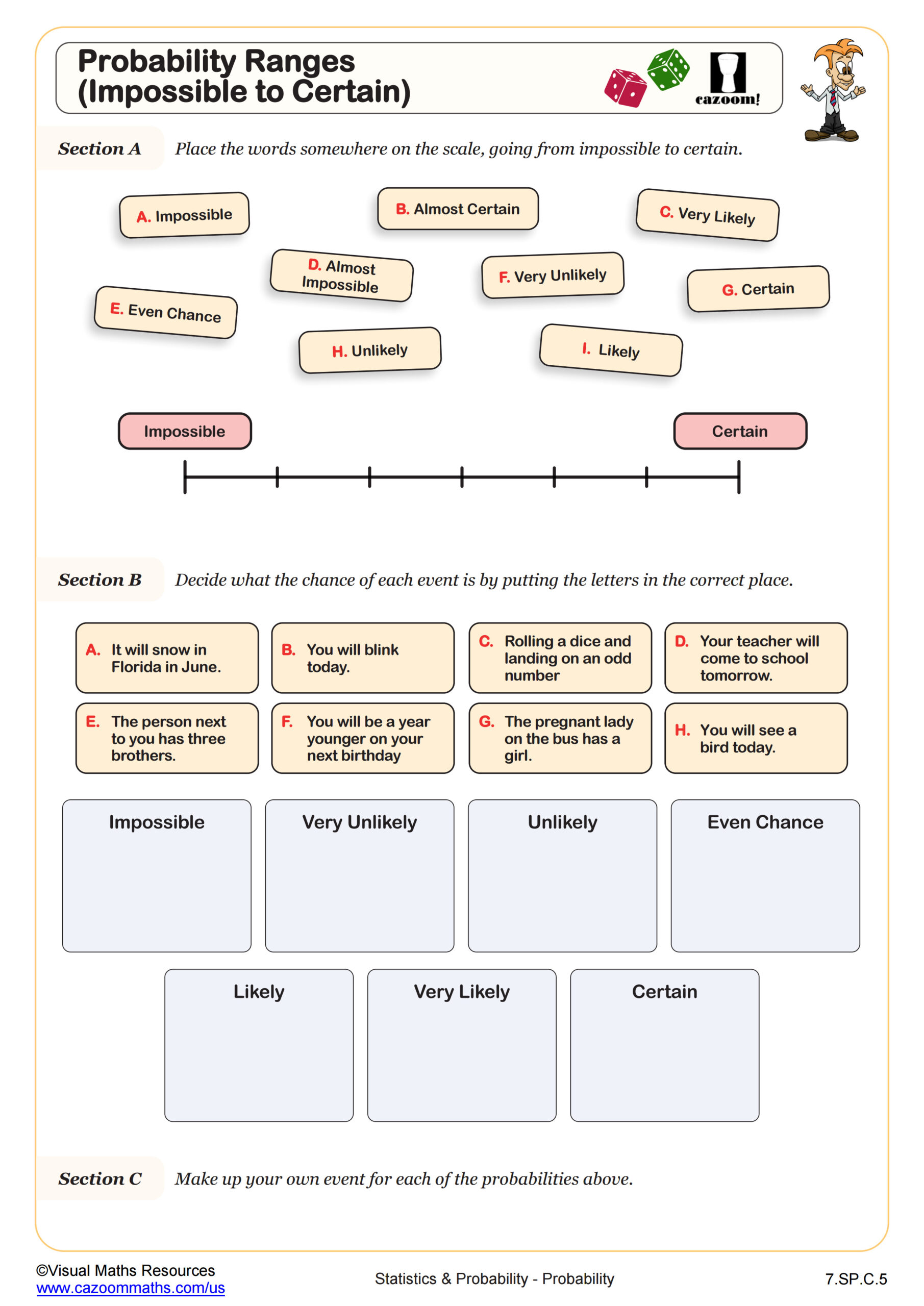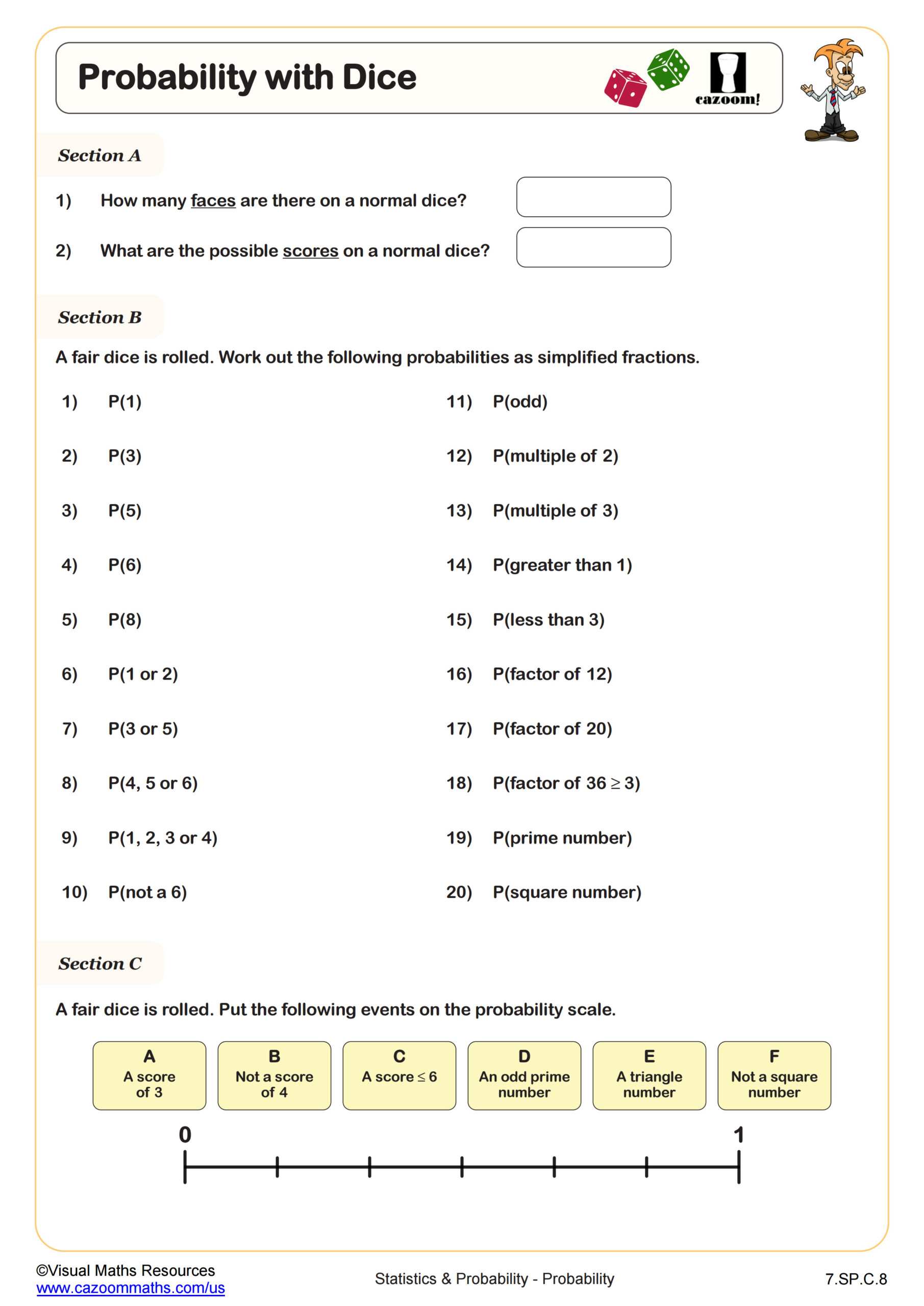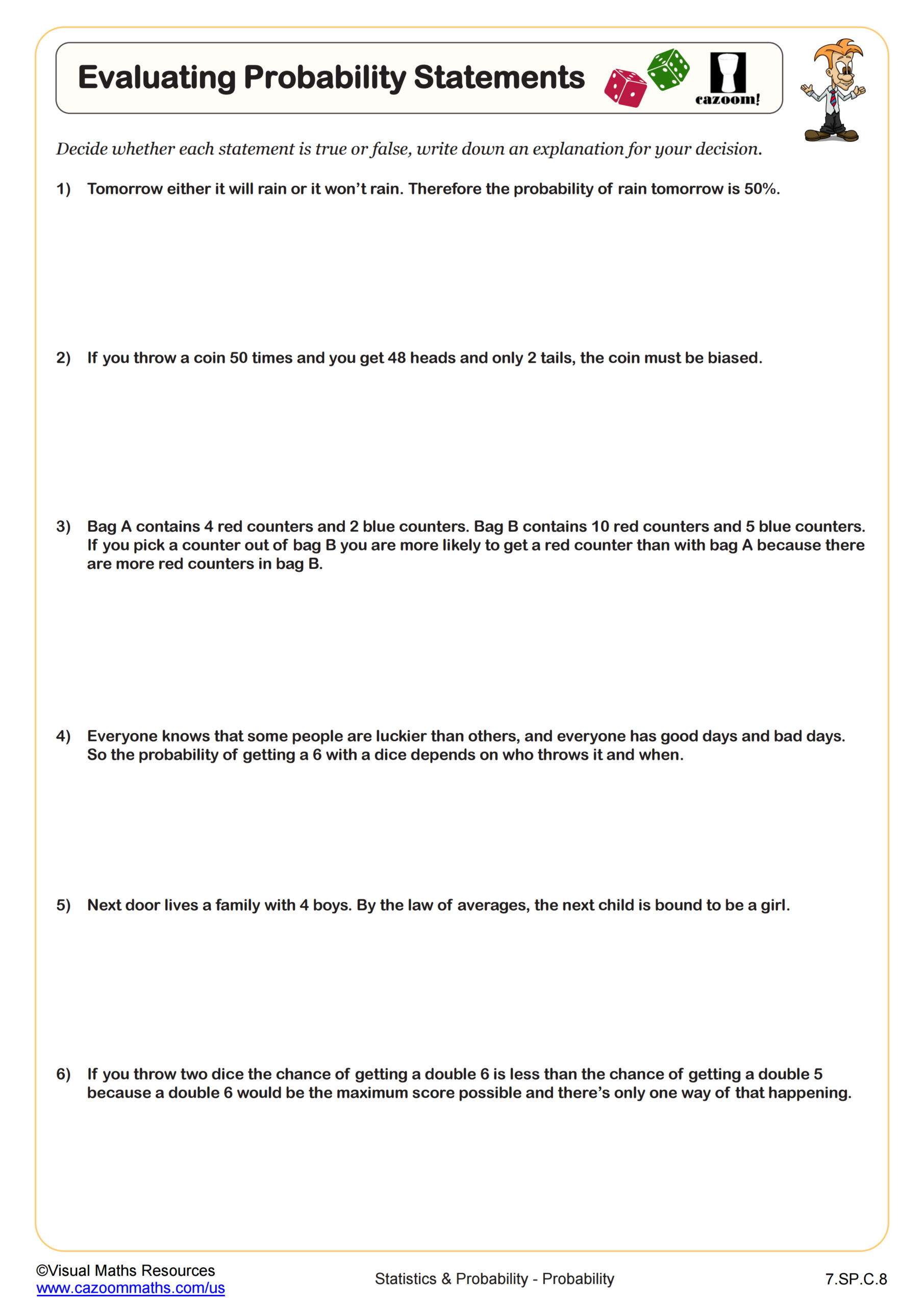Loading...
Back to:
Writing Probability as a Fraction WORKSHEET
Suitable for Grades: 7th Grade
CCSS: 7.SP.C.8
CCSS Description: Find probabilities of compound events using organized lists, tables, tree diagrams, and simulation. a. Understand that, just as with simple events, the probability of a compound event is the fraction of outcomes in the sample space for which the compound event occurs. b. Represent sample spaces for compound events using methods such as organized lists, tables and tree diagrams. For an event described in everyday language (e.g., “rolling double sixes”), identify the outcomes in the sample space which compose the event. c. Design and use a simulation to generate frequencies for compound events. For example, use random digits as a simulation tool to approximate the answer to the question: If 40% of donors have type A blood, what is the probability that it will take at least 4 donors to find one with type A blood?
Writing Probability as a Fraction WORKSHEET DESCRIPTION
Students will write the probabilities of different events occurring as fractions in their simplest form throughout this illustrated worksheet. Images are included to aid students.
Our events include all the classics such as objects pulled out of a bag, spinning a spinner, and rolling dice. Some events included are impossible, and there is opportunity to discuss that probability of an event happening and not happening sums to one. It is good practice to encourage students to simplify fractions; however answers provided are in original and simplified form.
See our worksheet Calculating Probability if your learners need more practice with this.




